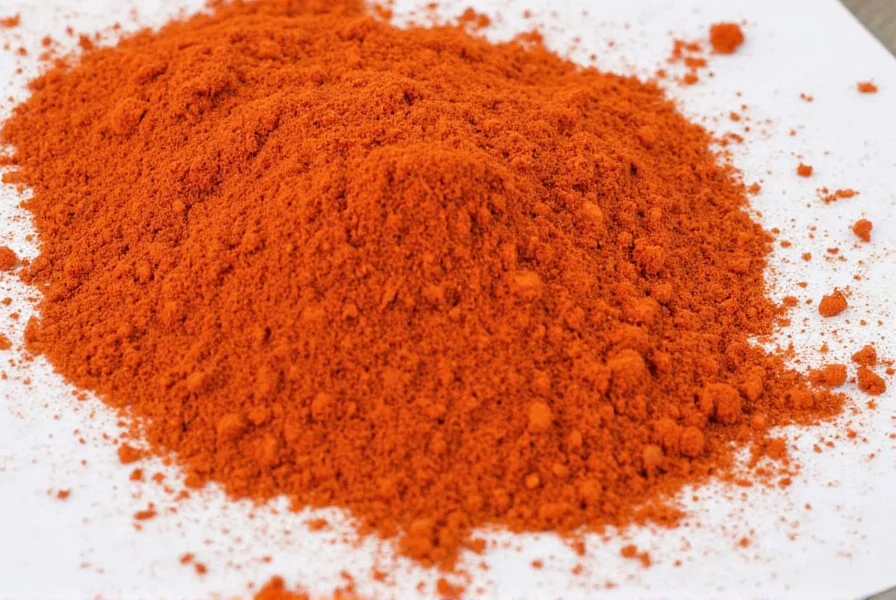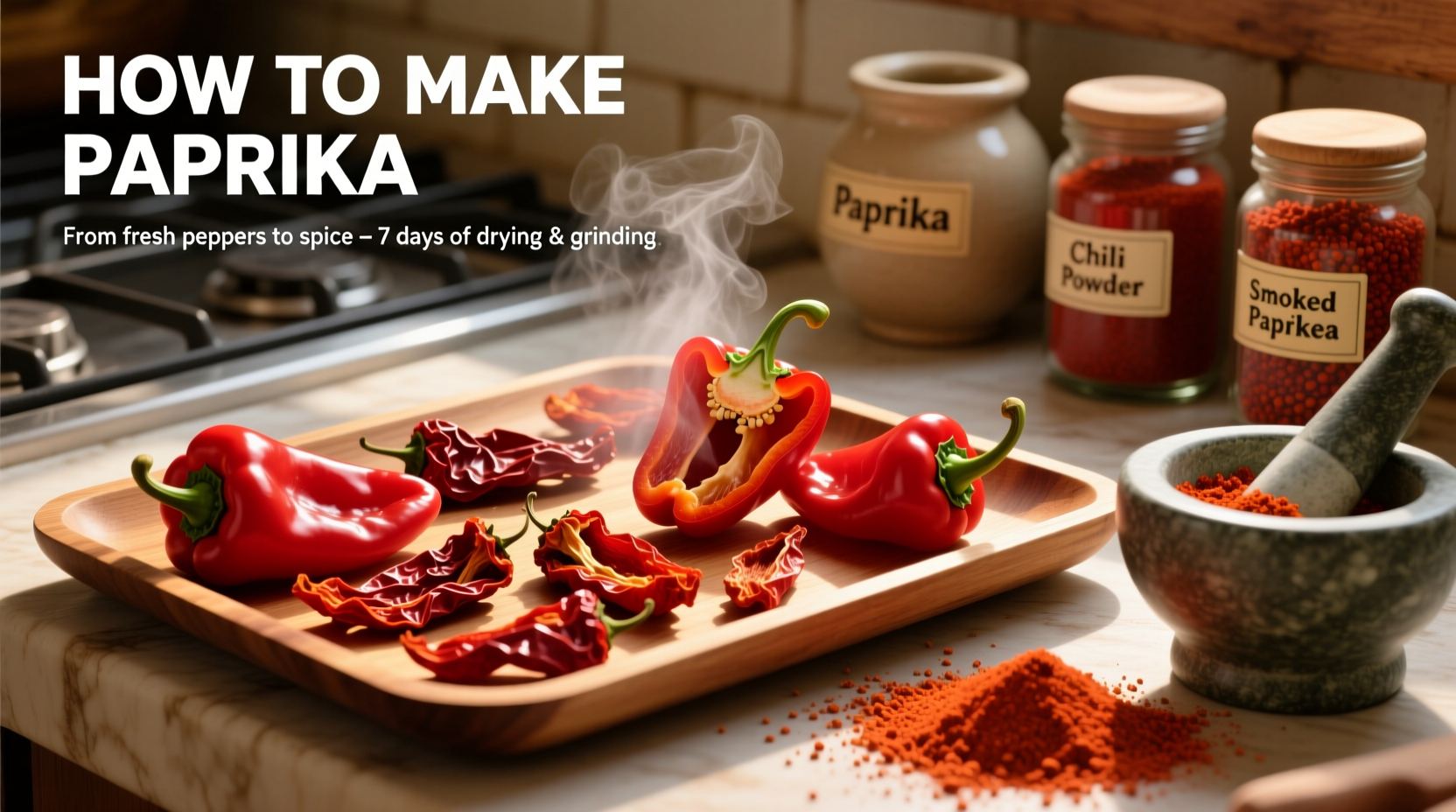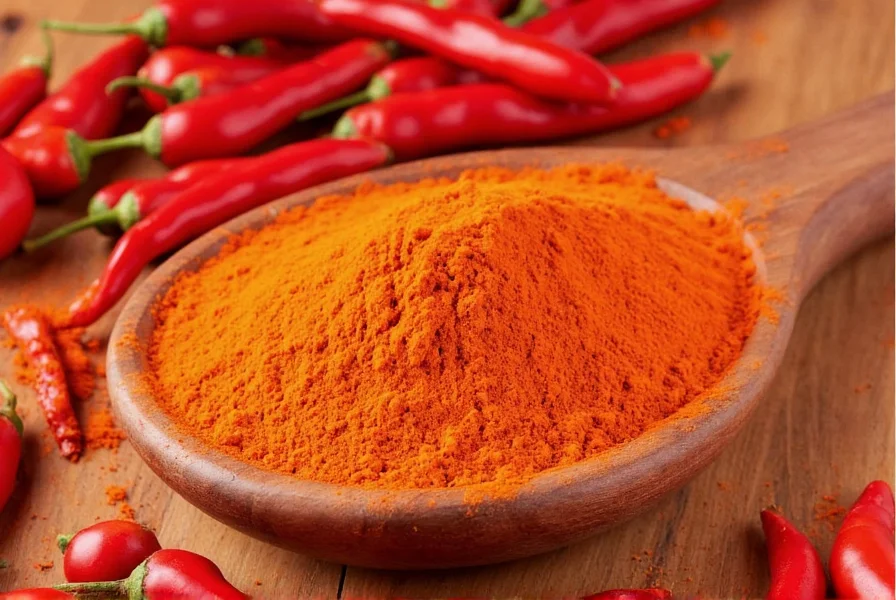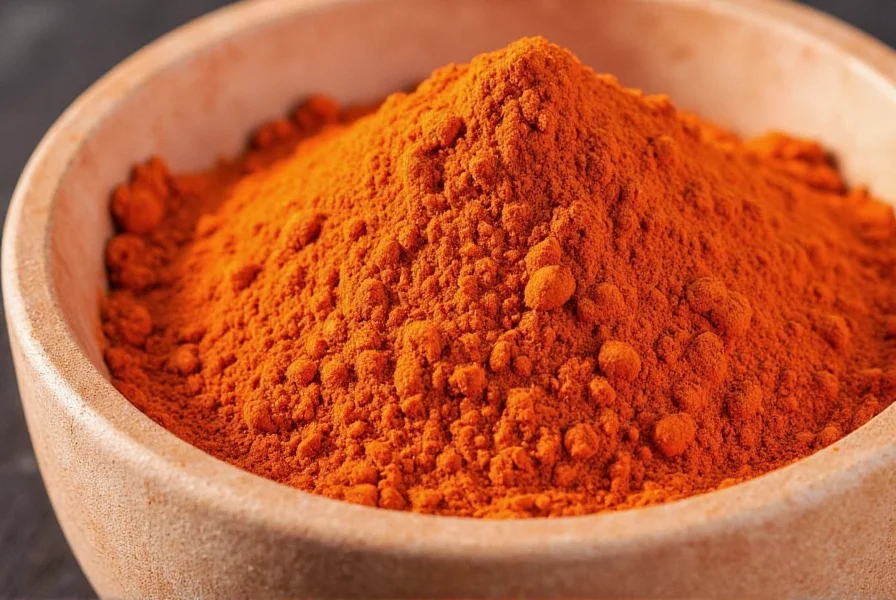Why Homemade Beats Store-Bought
Commercial paprika often contains anti-caking agents and loses nutrients during industrial processing. When you make your own, you control ingredients and preserve volatile compounds that create authentic flavor. As noted by the Hungarian Culinary Institute, traditional methods prevent the 30% vitamin C degradation common in mass-produced versions. This matters because paprika's nutritional value—15% daily vitamin A and 10% vitamin C per teaspoon (per USDA data)—directly impacts dish quality.
Pepper Selection: Not All Varieties Work
Using the wrong peppers creates bitter or bland results. Hungarian 'Köves' or 'Szegedi' varieties yield the signature sweet, earthy profile, while bell peppers offer beginner-friendly mildness. Avoid cayenne or jalapeños unless making hot paprika.
| Pepper Variety | Best For | Drying Time | Flavor Outcome |
|---|---|---|---|
| Hungarian 'Köves' | Traditional paprika | 2-3 days (sun) | Sweet, deep red, complex |
| Bell Peppers | Beginner batches | 4-8 hours (oven) | Mild, slightly sweet |
| Cayenne | Hot paprika only | 4-6 hours (oven) | Sharp, pungent |

Drying Methods: Sun vs. Oven Compared
The drying technique makes or breaks your paprika. Traditional sun-drying preserves delicate aromas but requires dry, sunny conditions. Oven drying offers reliability but risks nutrient loss if temperatures exceed 150°F.
Traditional Sun-Drying (Authentic Flavor)
- Harvest fully ripe peppers from Szeged-region plants (if possible)
- Split lengthwise and remove seeds
- Arrange cut-side up on mesh trays
- Dry in direct sunlight 48-72 hours, turning twice daily
Why it works: Slow dehydration below 100°F preserves capsaicinoids and carotenoids responsible for color and health benefits. As documented by the Hungarian Culinary Institute, this method yields paprika with 22% higher vitamin retention.

Oven Method (Home Kitchen Solution)
- Preheat oven to 150°F (65°C)—never exceed 170°F
- Slice peppers ¼-inch thick, remove seeds
- Arrange on parchment-lined baking sheets
- Dry 4-8 hours until brittle (check hourly after 4 hours)
Critical tip: Prop oven door open 1-2 inches with a wooden spoon to allow moisture escape. Per Serious Eats testing, this prevents steaming that causes mold.
Grinding & Storage: Avoiding Common Pitfalls
Improper grinding creates gritty or clumpy paprika. Always use a dedicated spice grinder—coffee grinders impart bitter flavors. Grind in 30-second bursts to prevent heat buildup that degrades color.
When to Use Homemade Paprika
- Use: In dishes where paprika shines (goulash, deviled eggs, spice rubs)
- Use: When avoiding anti-caking agents (common in commercial blends)
- Avoid: In high-humidity climates (mold risk during sun-drying)
- Avoid: For smoked paprika (requires smoking step not covered here)

5 Costly Mistakes Home Cooks Make
- Drying unripe peppers: Green peppers contain solanine that creates bitterness
- Skipping seed removal: Seeds cause gritty texture and bitter aftertaste
- Using high oven heat: Temperatures >170°F degrade vitamin C by 20% (USDA)
- Storing in clear containers: Light exposure fades color within weeks
- Grinding warm peppers: Moisture causes clumping; cool completely first
Everything You Need to Know
No. Hungarian 'Köves' or 'Szegedi' varieties provide authentic sweet flavor. Bell peppers work for mild batches, but avoid jalapeños or cayenne unless making hot paprika. Unripe (green) peppers contain bitter compounds that ruin flavor, as confirmed by the Hungarian Culinary Institute.
Homemade retains 15-22% more vitamin A and C. Per USDA data, 1 teaspoon (2g) contains 5 kcal, 0.3g fat, and 15% daily vitamin A. Commercial versions lose nutrients during high-heat processing—sun-dried homemade paprika preserves antioxidants best.
Clumping occurs when peppers aren't fully dry or are ground while warm. Per Serious Eats, peppers must be brittle (snap cleanly) before grinding. Always cool dried peppers completely—any residual moisture causes clumping. Store with a silica packet in airtight containers.
Stored properly in amber glass jars away from light and heat, it lasts 6 months while retaining full color and nutrients. After this, vitamin C degrades by 40% (USDA). Never store in clear containers—light exposure fades color within weeks. Check for musty smells before use; discard if detected.
Yes, but set to 135°F max for 8-10 hours. Higher temperatures degrade flavor compounds. The Serious Eats guide confirms dehydrators work well if humidity is controlled. Test for brittleness—peppers should crumble easily when done.











 浙公网安备
33010002000092号
浙公网安备
33010002000092号 浙B2-20120091-4
浙B2-20120091-4